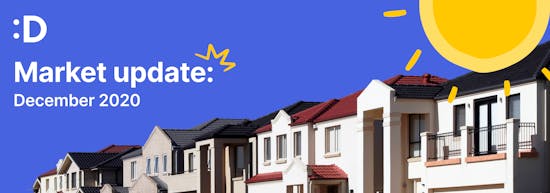If you’ve been watching the news lately, or you’ve been looking for a new place live, it will come as no surprise to you that the Australian rental market continues to face significant challenges, marked by high demand and critically low supply of properties.
Driven by a combination of economic factors and demographic shifts, issues with undersupply and a lack of affordability have been a hallmark of the market for several years since Covid.
Despite the odd sign of slowing growth in rental prices, the overarching conditions and relentless interest rate rises impacting owners, suggest substantial relief for renters is not on the way anytime soon.
The first quarter of 2024 has seen the national median advertised rent climb to $600 per week, and $625 in capital cities, as reported by the PropTrack Rental Report.
This represents a 3.4% increase from the previous quarter and an annual rise of 9.1% compared to the same period in 2023.
On a slightly more positive note for renters though, the rate of rental price increase has shown some small signs of moderation. Proptrack notes the 3.4% increase in the first quarter marks a slowdown, and in fact, is the slowest growth rate since December 2021.
Despite these indications of slowing growth, the rental market's consistent challenges are driving prices ever-upward.
As 2024 plays out, navigating these challenges remains a crucial concern for tenants and investors, each of whom must adapt to a landscape that shows little sign of change.
No relief for desperate Sydneysiders
Sydney's rental market remains one of the toughest in Australia, with extremely low vacancy rates hovering below 1%.
This scarcity of rental properties is due to a wide variety of factors, from renters returning to cities after regional living during Covid, to the simple fact it is one of Australia’s busiest cities, with the most opportunities for those moving in, especially new migrants who are more likely to rent than buy.
The ongoing demand has created a highly competitive environment where rental prices keep climbing, prompting inner-city residents to look for alternative locations.
Amidst this backdrop, the suburbs of Sydney are seeing a particular surge in interest. As the central areas become increasingly unaffordable, many potential renters are looking towards the outer suburbs where they can find slightly more reasonable rates.
This shift, however, has a knock-on effect and is gradually introducing higher rents to these areas as well, extending Sydney's pricing pressures outward. These challenges underscore the expansive nature of the city's rental market crisis, and the difficulty of developing solutions that will improve conditions for everyone.
The type of properties in high demand has also evolved in Sydney. While smaller apartments in the CBD were once highly sought after, there is now a growing preference for larger, family homes with additional space for home offices. This reflects broader changes in work habits and lifestyle preferences, including flexible work arrangements that reduce the necessity for proximity to CBDs.
Additionally, the construction sector has struggled to keep up with the rapid pace of demand due to regulatory changes, labour shortages and materials shortages, further reducing available inventory. This lack of new development is particularly problematic in a city where the population is growing notably, further straining the available housing stock.
For now, with no clear indications of how demand issues can be solved, persistent population growth, new housing lagging, and interest rates elevated, Sydney's rental market is likely to remain a challenging environment for renters and property owners alike.
Competition fierce for Melbourne residents
Not unlike Sydney, Melbourne's rental market is grappling with a similar set of challenges, driven by a surge in population growth and a limited supply of rental properties. As one of Australia's fastest-growing cities, it has attracted diverse groups seeking new opportunities, and the influx has put significant pressure on central areas and popular suburbs, leading to heightened competition and escalating rental prices.
While the CBD reportedly enjoyed an abundance of apartments in the past, according to Australian Property Investor, it is now seeing a shortage, as those who left in a mass exodus during Covid continue to return, and international students also make their way back. Suburbs adjoining the CBD are feeling the effects of these population changes, with rent having increased as much as 14% year-on-year.
Suburbs such as Fitzroy, Richmond, and Brunswick have also become particularly popular, offering a blend of lifestyle and larger living spaces, which are appealing to a broader demographic.
Like Sydney, the issue of supply is exacerbated by slow rates of new property developments. While there are several high-profile projects underway in and around Melbourne, delays and the pacing of new developments are not keeping up with the rapid population growth.
As Melbourne moves through 2024, the rental market remains tight, with few signs that the pressure on prices will ease substantially in the near future.
Around the country
Outside of Sydney and Melbourne, Adelaide mirrors the national trend with vacancy rates below 1%. The city has consistently shown a growing appeal, which has led to increased demand and consequently higher rents, particularly in areas close to central business districts and key amenities.
Perth is also experiencing low vacancy rates combined with high year-on-year average rental price increases, with growth still driven by its relative affordability compared to other major cities and the lifestyle it offers.
Economic factors such as interest rates and wage growth are significantly influencing the rental market. With interest rates expected to remain elevated, renting will be the more feasible option for many Australians. However, unless there is a corresponding rise in wages, the increasing cost of rent could potentially outpace what many households can afford, leading to greater rental stress.
Looking ahead: what to expect
As we look further into 2024, the Australian rental market is expected to maintain high demand with ongoing pressure on prices due to low vacancy rates and economic factors. Seasonal fluctuations and investor activities will also play a critical role in shaping market dynamics.
For renters, the market poses considerable challenges with few signs of easing. Renewing your lease sooner rather than later to secure your property and better inform and plan finances could be a worthwhile consideration.
For investors, high rent offers potentially solid returns, and though the expectation is interest rates won’t increase too much further (and will hopefully come down towards the end of the year), nothing is certain on that front, so these changing dynamics require careful assessment and strategy.
At :Different, we are keeping a close eye on all aspects of the market and using our extensive experience to provide insights and guidance to our property owners, so you can continue to achieve the best returns possible on your biggest investments.
Disclaimer: The views, information, or opinions expressed in this blog post are for general information purposes only and should not be relied upon. We have not taken into account specific situations, facts or circumstances, and no part of this blog post constitutes personal financial, legal, or tax advice to you. You should seek tax advice from your accountant, specific to your situation.



